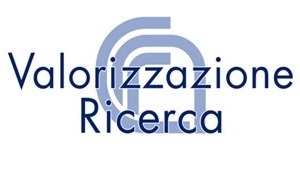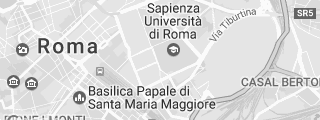TECHNOLOGY DESCRIPTION
Leafstyle aims to create a management tool of the plant life. The first prototype is the result of a scientific collaboration between three Italian research institutions, i.e. the National Research Council (CNR), the University of Pisa (UNIPI), the Council for Research in Agriculture and Agricultural Economic Analysis (CREA).
This collaboration has been focused on a basic problem: there is a growing demand for quick and non-invasive tools for measuring the plant health status, coming from the high value crop agriculture, such as wine producers and ornamental plant nurseries, and from the agro-bio-science research areas as well. Therefore, we introduced the concept of the “plant wellness”, defined as the best physiological condition in which the single plant can grow up. At the same time, we had the necessity to create new tools capable of comparing the current plant status to its optimal well-being without causing trauma or damages (for instance without removing the leaf from the plant).
The Leafstyle solution is based on an electromagnetic sensor capable of getting the right information from the inside of the leaf without any contact, and translating the internal amount of water into a useful index, i.e. measuring the fundamental parameter to determine if the plant is under suffering. At the current state of development, the instrument is composed of a terahertz light source, a terahertz detector, a vision system, and a computer for real-time data analysis.
The process of measurement is easily explained: once chosen the leaf to be examined, the terahertz light passes through the leaf and reaches the detector, which transforms the light into an electronic signal. Then the electronic signal is sent to the computer. At the same time, the vision system measures the coordinates of the leaf relative to the terahertz light, together with the leaf projective area. The whole acquisition is subsequently sent to the computer, which correlates such data with the terahertz measurements and finally derives the amount of water contained by the leaf.
The Leafstyle solution guarantees the repeatability of the measures with an accuracy of about 95%.
BENEFITS
The conventional measuring instrument used to determine the water content in a leaf/plant is the pressure chamber of Scholander, which requires a destructive sampling and long waiting times for obtaining the final data. Such method is not optimal, neither for quality production purposes (as it damages the plant and causes the arising of stress phenomena) nor in case fast and prompt decisions are needed (e.g. emergency irrigation).
At the state of the art, there are some alternative methods, such as the thermocouple psychrometry, which presents difficulties in the interpretation of the measurement in the presence of thermal gradients, and the gravimetry (i.e. weighing of just severed leaves, which are then placed in an oven for 24 hours and, once dried, weighed again). Such method is clearly not optimal for precision crops since it is adopts a destructive analysis of plant tissues, and thus not repeatable.
Nonetheless, also the state-of-the-art techniques exploiting terahertz light are showing some limitations, such as poor reliability or growing complexity as the data refinement grows.
Leafstyle tool overcomes all of the above-mentioned limitations. In particular:
- it is non-invasive, thus avoiding shocks to the plant or damages inferred by the detachment of leaves;
- the measurement is quick, allowing a realistic timeframe and performing, directly in the field, the desiderata measurements/analyses;
- it is repeatable and then allows monitoring over time and on different plants the well-being degree.
Moreover, it is simple. The returned parameter is easy to understand, because it is directly correlated to the mass of water contained by the leaf. Therefore, the Leafstyle technique does not require any complex, supplemental data extraction, which is of great advantage with respect to the other terahertz techniques.
The results obtained by Leafstyle guarantee the repeatability of the measurements with an accuracy of 95% (in a laboratory environment). Furthermore, it allows both to locate an index relating to the variety of analysed plant - so that each variety has a well-defined water reference curve - and to differentiate the single plant behaviour in terms of response to the input.
Both the methodology and the technology have been protected through a patent application (Italian patent application no. 102016000106179, filed on 21st October 2016), jointly filed by CNR, UNIPI and CREA.
LIMITATIONS
Defining a specific market sector for the Leafstyle technology can be tricky. Since the technology deals with water management, the capital recovery time for the investment presents high local variability depending on both environmental and legislative conditions. For this reason, we are looking for large-size farms and nurseries as the ideal partners, because they could provide us with the perfect ground for testing and developing our technology together with our potential end-users. On a local scale, our technology could be attractive for the major horticultural district in Pistoia as well as the largest Chianti vineyards.
At the same time, we are looking for financial partners, such as business angels or venture capitals, or eventually production partners coming from the instrumentation retail market, to support the second stage of the Leafstyle prototyping.
APPLICATIONS
- Agriculture / irrigation
- Plant nurseries
- Water management and water savings on farming soils
- Increase of crops yield / high-value cultivars
MATERIALS
Readiness Level (TRL)
 Patent Grading Report |
Patent Grading ReportThe Grading Patents Report evaluates and grades US patents Sample Buy from Wisdomain |
STATUS
Current status
Priority patent application filed on Oct. 21st 2016 in Italy
AVAILABILITY
Available for
partnership, start-up creation (fundraising / business angels / venture capitals), licensing
INVENTOR / TEAM
L. Baldacci, L. Masini, CNR - Institute of Nanoscience






